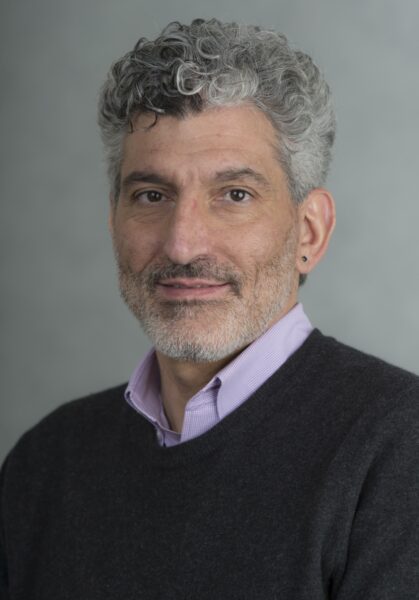
Alzheimer’s disease (AD) is an irreversible, progressive brain disorder. AD destroys neurons, causing memory loss, confusion and impaired judgment. It is characterized by the formation of two pathological features, plaques and tangles. Plaques are made from a fragment of the protein called beta-amyloid and buildup between the neurons. Tangles form inside neurons and consist of twisted bundles of fibers of a protein called tau.
Research has shown that over time, these two abnormal pathologies spread through the brain in a very characteristic pattern and Dr. Dean M. Hartley is particularly interested in the progression of the plaques. In the earliest stages, plaques are only present in the upper areas of the brain. However, as the disease progresses the plaques move to other specific areas lower in the brain, as though they are following specific pathways. These cues suggest that the disease is moving by electrical activity through specific neuronal pathways, connecting one area to the next, driving new pathology. Understanding how this progression occurs is key in understanding how to stop this disease.
Dr. Hartley used his 2009 BRF Seed Grant to examine the possible role of seizure-like activity in the progression of AD. Dr. Hartley’s working model is that brain cells become “hyperactive,” similar to the activity measured during very mild seizures; this abnormal activity then causes the characteristic AD pathology to develop in this area. Moreover, this hyperactivity travels to other regions by specific connections causing a cascade of hyperexcitability and subsequent AD pathology; this specific hyperactivity drives the progressive pathology in the brain.
Studies have reported seizure-like activity in AD patients and animal models of AD. Recent studies in animal models of AD have shown a type of “silent seizure,” suggesting there is an undetected hyperactivity in the AD brain. Dr. Hartley tested his hypothesis by placing sensitive monitoring devices in a mouse model of AD to determine if the sequence of the developing pathology is preceded by hyperactivity.
To further understand this problem, drugs that block this hyperactivity, including anti-seizure medications, were to be administered at different time periods. This was to help in understanding if hyperactivity is involved, and also determine if interrupting hyperactivity at a specific time may block “downstream” areas from developing AD pathology. A better understanding of this relationship is warranted and may be extremely valuable in identifying mechanisms responsible for this devastating disease. Most importantly, this understanding may suggest that drugs blocking or reducing hyperactivity in the brain may be able to stop the initiation or progression of the disease; currently we are only able to treat the symptoms. The potential of this research is that antiepileptic drugs, which block neuronal hyperexcitability, may be useful in treating AD. Because these drugs are currently used to treat epilepsy, they could be rapidly transitioned to the treatment of AD.
New research suggests that a healthy diet, exercise and social interaction can reduce the risk of cognitive decline and AD.
Up to 5.1 million Americans are living with AD (NIH AD Fact Sheet). As the U.S population ages, this number will significantly increase unless a treatment or cure can be found.

Dean M. Hartley, Ph.D., Neurological Sciences at Rush University Medical Center



